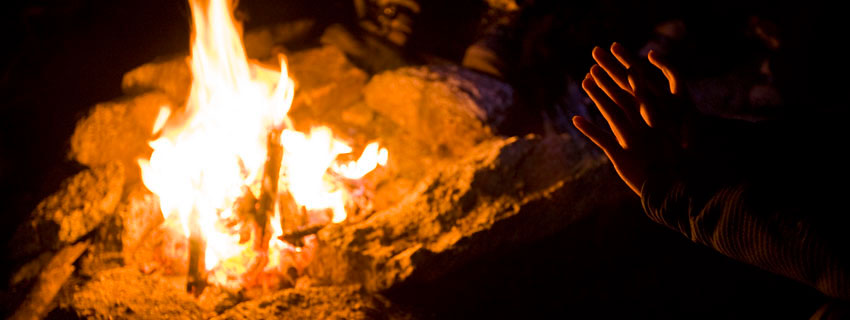Should I build a campfire?
“The fire is the main comfort of the camp, whether in summer or winter … it is as well for cheerfulness as for warmth and dryness.” Henry David Thoreau
Warming your hands by the fire has been a part of camping since long before the idea of Designated Wilderness even existed. Being able to build a fire is an important wilderness skill, but of all the things we do in wilderness, building a campfire is the most likely to impact the place we came to enjoy. So, when is a fire appropriate?
Is it necessary?
Though they can be enjoyable, we rarely need campfires in the wilderness. If hot food is the goal, cooking over a fuel stove is far faster, easier, and less damaging to the place we came to enjoy.
Is the forest dense enough to replace the dead wood you plan to burn?
Though specific fire regulations vary drastically between areas, one basic universal rule is that fires are not allowed above tree line (roughly 10,000 feet in the Sierra). In these alpine environments plants and animals need what few nutrients exist, and burning dead wood takes these nutrients out of the fragile ecosystem.
Is there an existing fire ring?
When considering a campfire, always ask yourself if there is an appropriate place to have the fire. Many wilderness areas require that visitors only use existing fire rings. This limits the impacts from unnecessary rings and concentrates use in established campsites away from the trail and water ways.
What is the fire danger?
Given the time of year and your location, what is the danger of accidentally starting a larger fire? When you leave your site, make sure your fire is completely out. Use water instead of dirt to extinguish the fire. If you can dig your hand through the ash, you know the fire is completely out.
Are there specific fire regulations in the area?
Certain sensitive areas have specific fire regulations. Some areas require fire permits, some don’t allow fires at all. Always double-check fire regulations before building a fire, even if you find an existing fire ring in the area where you plan to camp.
How to Build a Responsible Fire
If you decide to have a fire, wherever you are, here are some guidelines to help make that fire as low-impact as possible:
Use an existing fire ring: If you decide to build a fire, always find an existing fire ring in a well-placed campsite instead of building a new one. Avoid building your fire against a rock wall or boulder. Smoke from the fire will leave soot and ugly permanent scars on rock outcroppings.
Leave the saw at home: Only burn dead and down wood off the ground. Breaking branches off of live trees harms those trees, creates an eye-sore, and the wood is less likely to burn completely.
Burn small branches instead of logs: Make sure the wood you burn is small enough to burn completely (down to white ash). Large logs like those you might burn in a home fire-place won’t easily burn completely in a small camp fire. As a rule of thumb, collect branches no bigger than your wrist. A small, well-built fire will burn more completely, heat more effectively, and have less smoke than a poorly-built, large fire with big logs. Don’t burn your trash. Many food wrappers don’t burn completely. If you pack it in, pack it out.
Scatter your extra wood: When done with a campsite, avoid leaving a pile of wood “for the next group.” Leave it like you found it. Leaving “no trace” is virtually impossible when building a fire, so it’s vital that we do all we can to minimize what trace we do leave behind. Visit the Leave No Trace website for more fire ideas and information about “Leave No Trace” fire techniques.
